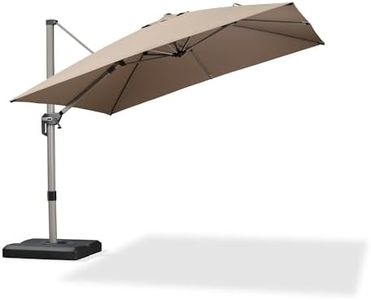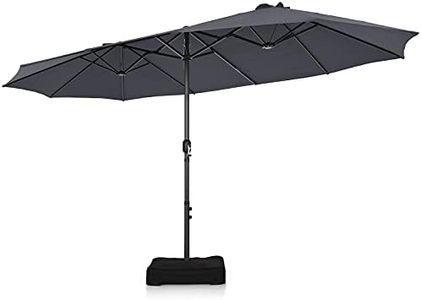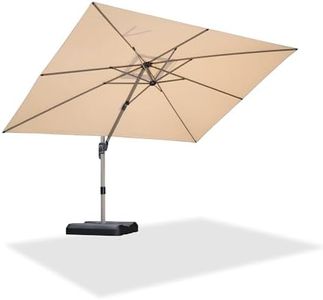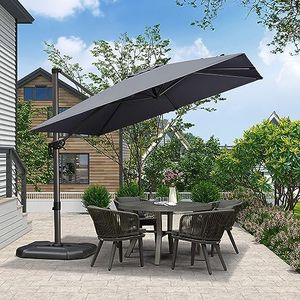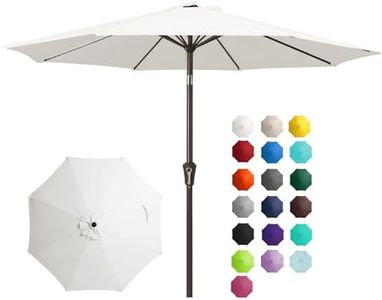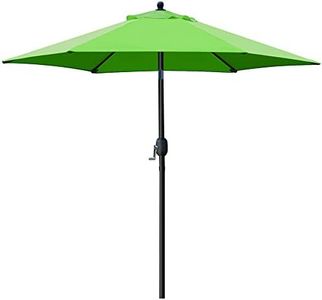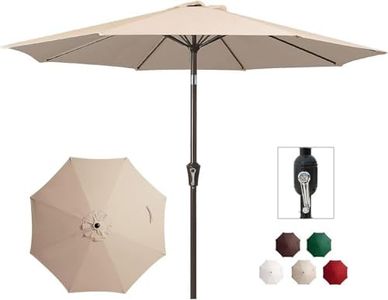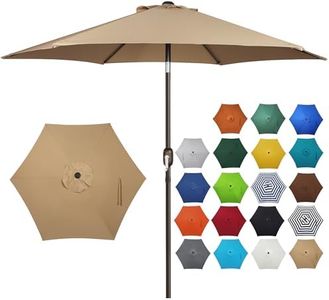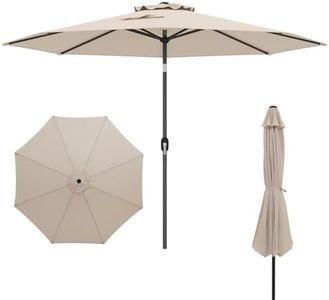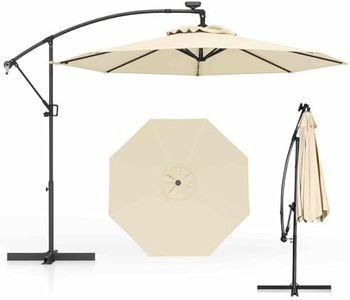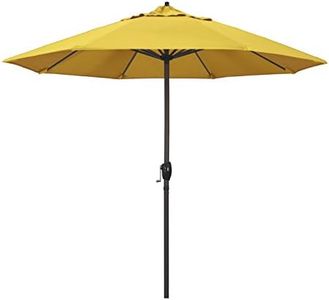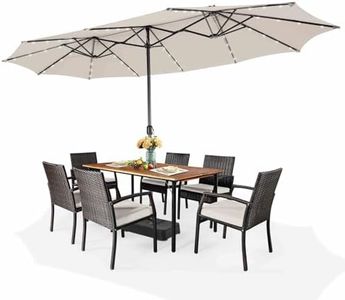We Use CookiesWe use cookies to enhance the security, performance,
functionality and for analytical and promotional activities. By continuing to browse this site you
are agreeing to our privacy policy
10 Best Patio Umbrellas
From leading brands and best sellers available on the web.By clicking on a link to a third party's website, log data is shared with that third party.
Buying Guide for the Best Patio Umbrellas
Choosing the right patio umbrella is all about making your outdoor space more comfortable, stylish, and protected from the sun. It's important to think about where and how you'll use your umbrella, the weather conditions in your area, and the overall look you want to achieve. Understanding the key specifications will help you find an umbrella that suits your needs, lasts over time, and enhances your outdoor experience.Size (Diameter or Width)This tells you how much area the umbrella will shade. It's measured across the top—usually in feet. Small umbrellas (6-7 feet) work best for little bistro tables or compact spaces, while medium (8-10 feet) umbrellas cover patio dining sets for four to six people. Large umbrellas (11 feet and up) are great for bigger seating areas or poolsides. To pick the right size, think about how many people or how much furniture you want to cover. If your table seats six, an 8-10 foot umbrella is generally sufficient. Go larger if you'd like extra shade or have a sprawling setup.
Canopy MaterialThis is the fabric that makes up the umbrella shade. Common options are polyester, acrylic, and olefin. Polyester is budget-friendly and fade-resistant but may not last as long in intense sun. Acrylic (like Sunbrella) is top-tier for UV protection and long-term color, while olefin is durable and stain-resistant. When choosing, consider your climate—if you get lots of sun, choose acrylic. If you need something sturdy for occasional use, polyester or olefin can be a good fit.
Frame MaterialThis is what the umbrella's pole and ribs are made from. Aluminum is lightweight, rust-resistant, and easy to move, making it ideal for most patios. Wood adds a classic look, is sturdy, and works best in covered or less humid spaces to prevent weather damage. Fiberglass combines flexibility and strength, making it great for windy areas. Choose the frame material that matches your climate and style preferences—aluminum is versatile, wood is elegant, and fiberglass is tough where wind is a concern.
Tilt and Adjustment MechanismsThese features allow you to angle the umbrella to block the sun as it moves. Some umbrellas tilt with a push-button or crank, while others have no tilt at all. Tilt mechanisms are useful if your patio sees sun from different directions during the day. If you’re only shading a fixed area at certain times, a non-tilting umbrella may work. Pick an adjustable option if you spend varied hours outdoors or need flexible shade.
Opening MechanismPatio umbrellas can be opened and closed using cranks, pulleys, or simple push-up systems. Crank mechanisms are easy to operate and ideal for frequent users who want convenience. Pulley systems are traditional but may require more effort. Push-up styles are straightforward and work well for smaller umbrellas. Choose the mechanism based on how often you’ll open and close the umbrella and how much effort you want to put in.
Base CompatibilityThe base anchors your umbrella and prevents it from tipping. Not all umbrellas come with a base, and size/weight requirements vary. Heavier or larger canopies need a heavier base for stability. If you plan to move the umbrella or place it in a table, check both the pole diameter and recommended base weight. Always select a base that matches your umbrella’s size and intended use for safety and stability.
UV ProtectionSome umbrella canopies are rated for specific levels of UV protection. This matters most if you spend long periods outdoors or want to protect children and sensitive skin from harsh sun. Umbrellas with high UPF (Ultraviolet Protection Factor) ratings provide better shielding. If you’re mainly after shade for quick breaks, standard fabric may do. For longer lounging or stronger sun, look for a high UPF or specifically UV-protective material.
